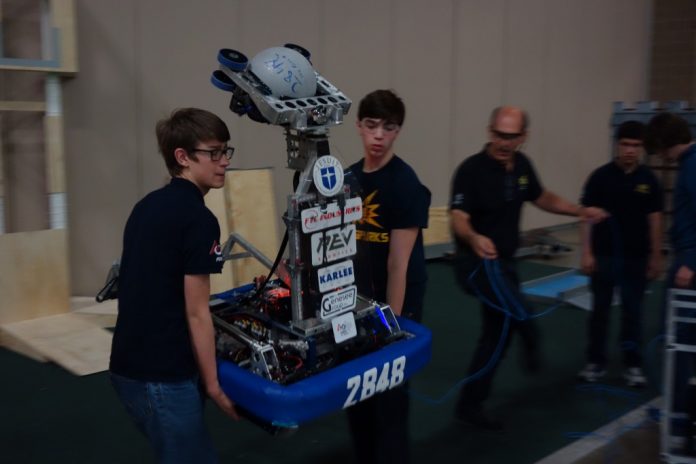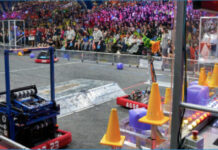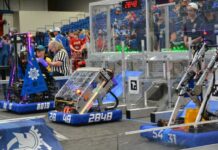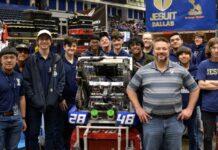Think of a sport. What popped into your head? Football? Baseball? Basketball? Robotics? One of these might not seem like the other; yet, robotics requires just as much concentration, commitment, and preparation as the other sports.
Jesuit robotics students in particular have been working diligently and fine-tuning their machinery for their tournaments. With junior varsity competitions under way and varsity ones not far away, I sat down with robotics coach Michael Couvillon for an interview about this year’s robots, competitions, and team.
Q: When does the robotics team compete?
A: The junior varsity competes in November, a little bit in December, and then in January. The varsity competes in mostly March and April.
Q:What has junior varsity been doing in the month of November?
A: We had a tournament here at Jesuit on the 12th. Then we have our upcoming tournament on December 3rd. We have another tournament coming up on January 14th [and another] on January 21st. Those are all our league play, and we co-host the league with Greenhill. Greenhill hosts the championship of the league, and if you win out in [it], you go to a regional tournament at UTA, which is at the beginning of February.
Q: What sort of robots do you bring to competitions?
A: It’s a FIRST Tech challenge, and the guys have to make a robot that at the start of the match fits inside an eighteen inch cube. There’s no real weight requirement, and it plays a game called ‘Velocity Vortex.’ They basically pick up whiffle balls the size of softballs and shoot them into a center goal, and they can also get a lot of bonus points for capturing beacons, which are small boxes on the side of the field that have push-buttons and toggle between red and blue depending on which alliance has last touched it. There are bonuses for having them lit to your alliance’s color at the end of the match. They always have an autonomous period to each match, and there are extra points for doing things in autonomous as well.
Q: What is the preparation process for these competitions?
A: We meet Mondays and Wednesdays from 4 to 7 and then every other Friday and one Saturday a month to build the robots. We have three teams, and we split up the close to forty students between the three teams. Each of the teams is student-led by upperclassmen, and they go through the entire build cycle: analyzing the game, designing the robot, fabricating, assembly, testing, breaking things, repeat. They do that for several months.
Q: Is that [preparation] what varsity is doing until March?
A: Varsity does not start until January 7th. We have our big reveal of the game on January 7th, and then they have six weeks to build the robot. At the end of the six weeks on February 21st, we bag up the robot and get ready for our tournament. We can’t touch the robot until we get to our tournament.
Q: Will their game be the same as JV’s?
A: No, it will be different. It is the same organization, but the games are always different.
Q: How is JV doing so far in competition?
A: They’re doing really well. In our league, we have two of our three teams ranked in the top five. I don’t know if we are still ranked number one in our league. That ranking just determines your rank going into the championship because the championship is a best-out-of-three bracketing.
Q: How do you think varsity is going to do?
A: I think we’re going to be strong like we always are. We have a great set of adult volunteers that come in. They really are the lifeblood of the program. Obviously, students are important, but the students come and go while the adults are here every year; they’ve gone through several cycles of students. Without them, we wouldn’t have the program that we do, and they do it just for the enjoyment of spending time with the students and working with them and teaching them about their fields because most of them are professional mathematicians or engineers.
It’s clear that sparks will be flying when Jesuit robotics takes the stage this year. Stay tuned to The Roundup to stay on top of all the news!






